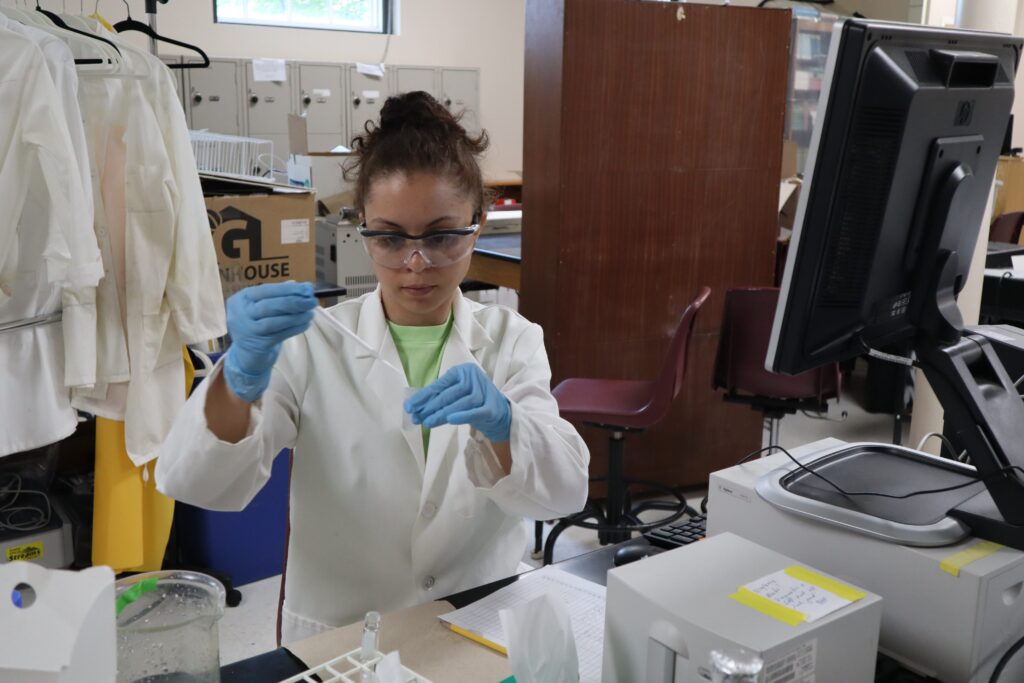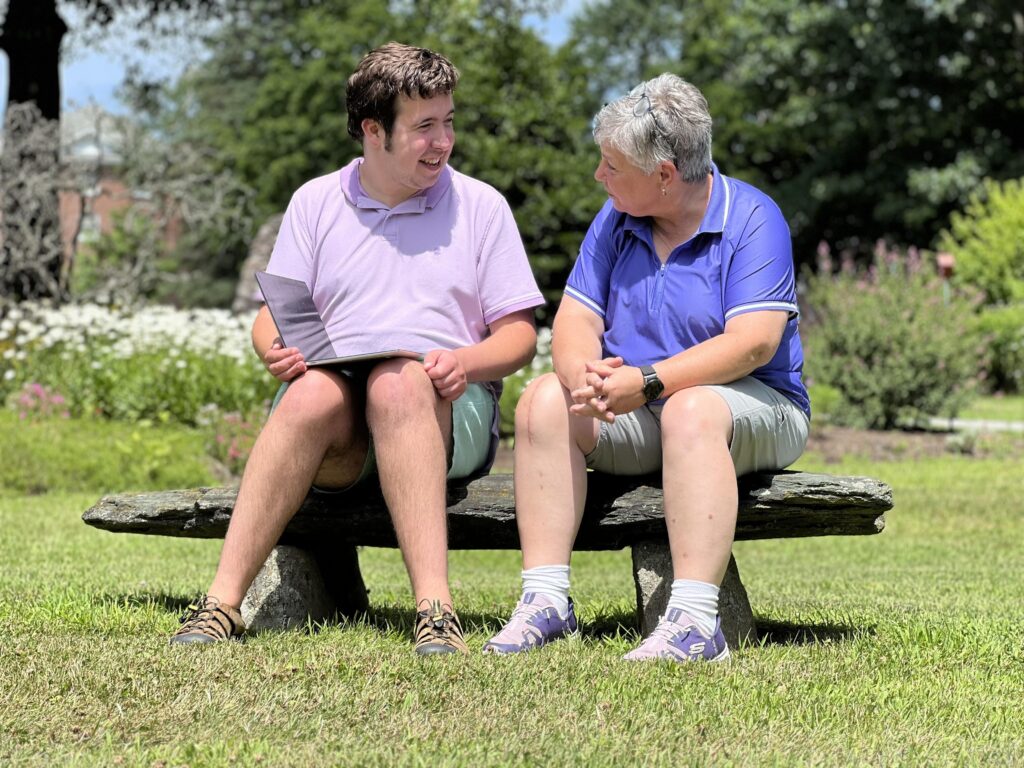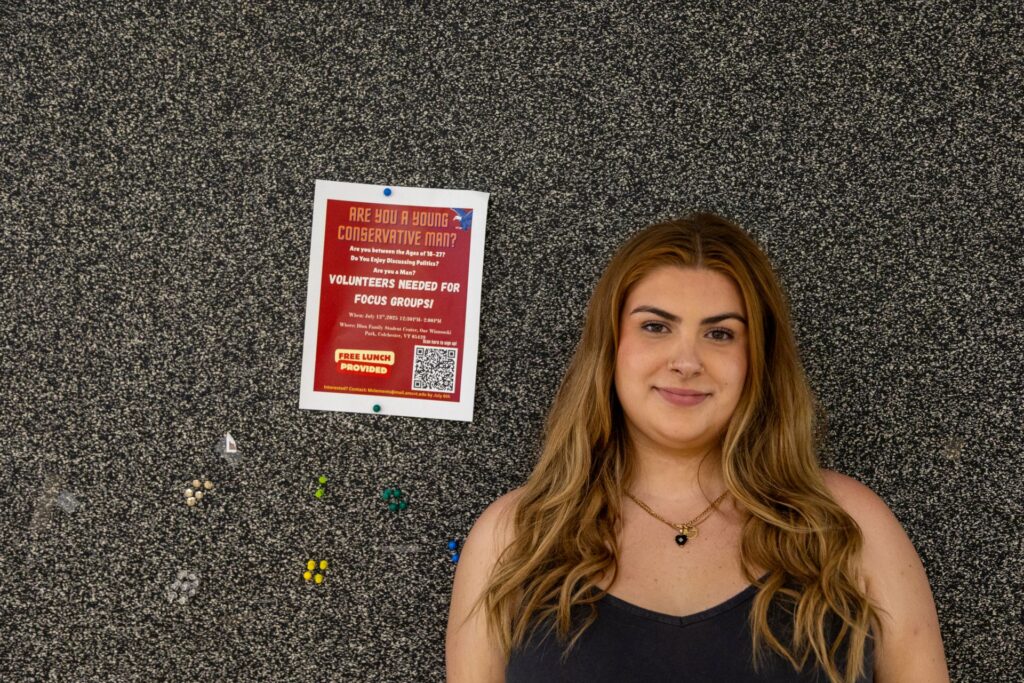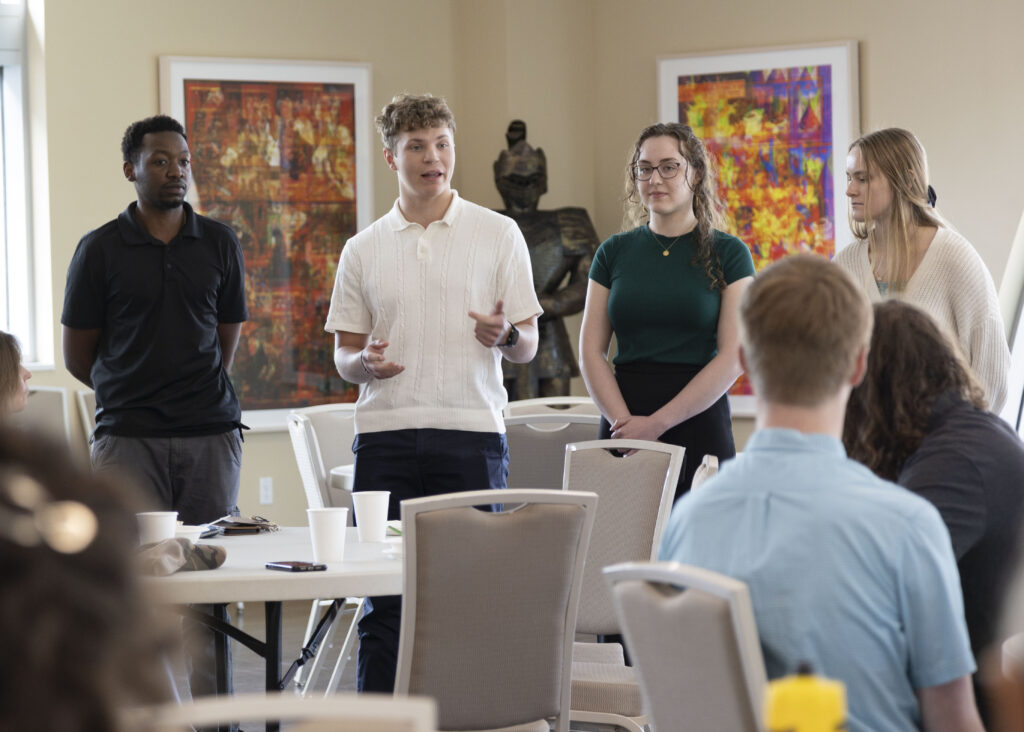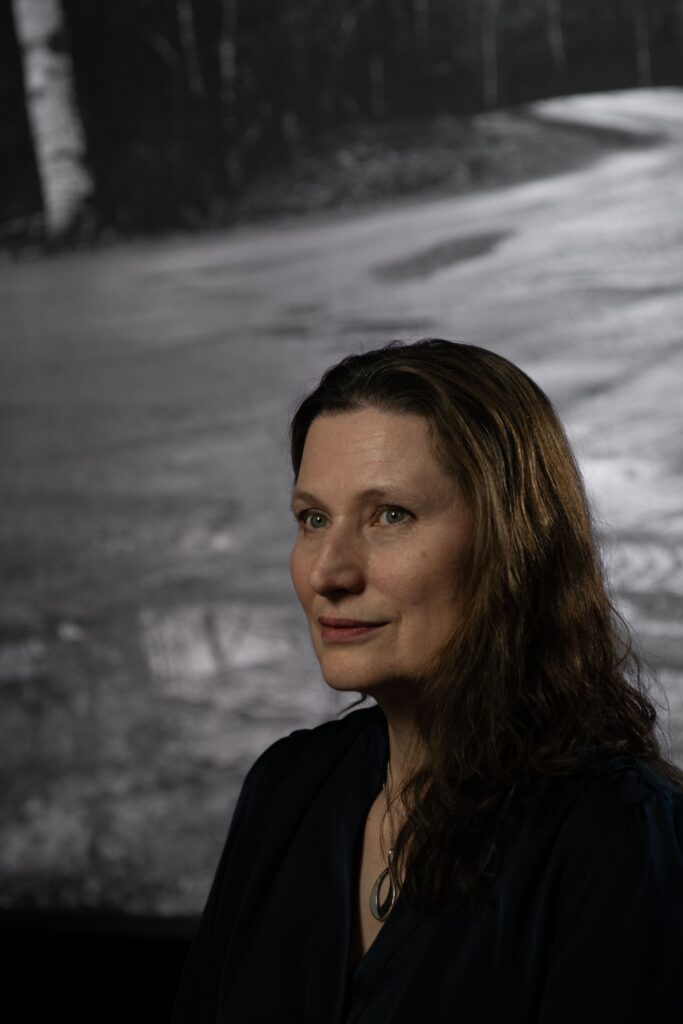Leahy appropriation at Saint Michael’s funds two inaugural Institute for the Environment fellows
Two instructors who have come to Saint Michael’s College through a new fellowship program are helping answer major environmental questions of the day – and they are involving students in this important work.
The instructors – one in Physics and the other in Environmental Studies – are the inaugural fellows for the 2024-2025 academic year who have come to Saint Michael’s College through its Patrick ’61 and Marcelle Leahy Institute for the Environment. They will each be here for a one-year term, which will be renewable at the end of the academic year, said Institute Director Kristyn Achilich.
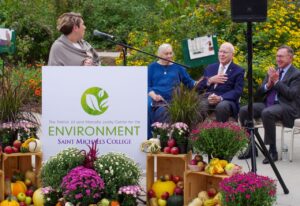
Institute for the Environment Director Kristyn Achilich welcomes former U.S. Senator Patrick Leahy and Marcelle Leahy home to Saint Michael’s as Interim College President Lewis Thayne looks on during an event on Sept. 23, 2023.
The fellowships were made possible by a $6.5 million appropriation that now retired Sen. Leahy secured for Saint Michael’s College in January 2023 as one of his final achievements in U.S. Congress before his retirement. Leahy, a 1961 alum, represented Vermont as a U.S. Senator for almost half a century. As part of his service, he pressed for policies and funding that helped address environmental challenges, including in Vermont.
Achilich said the aim of the program is to bring in instructors who are working on environmental issues from different lenses and disciplines, echoing the transdisciplinary approach of the Institute. The instructors continue to be engaged in their research while also teaching classes and involving students in new opportunities for research and hands-on learning both inside and outside the classroom.
“When you pull back and look at the environmental level, it’s a complex transdisciplinary topic area,” Achilich said. She added that it will take many different perspectives, academic disciplines, and areas of research to begin solving environmental problems.
“That’s the mission of the Leahy appropriation: to become a lighthouse for how this can happen in higher ed,” Achilich said. “Our size and our mission are 100 percent advantaging us for being that lighthouse.”
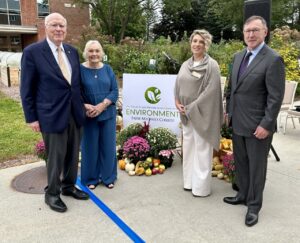
From left, former U.S. Senator Patrick Leahy ’61, Marcelle Leahy, Center for Environment Director Kristyn Achilich, and Interim Saint Michael’s College President Lewis Thayne pose with the new logo for the Patrick ’61 and Marcelle Leahy Institute for the Environment during a dedication ceremony on Sept. 23, 2023.
Applying physics to climate change
Physics instructor and Leahy Fellow Brandon Montemuro came to the College following post-doctoral work at the University of Washington centered on climate modeling with Arctic sea ice. While he mainly focused on math theory before obtaining his Ph.D., Montemuro said his post-doc work with sea ice really showed him the power of having researchers from different backgrounds band together to solve an environmental issue.
“There were seven different universities throughout the country that were all working together,” Montemuro said. Applied mathematicians, like Montemuro, worked hand in hand with oceanographers and atmospheric scientists to put together a model for climate change based on the movements and underlying physics of sea ice.

Brandon Montemuro, one of the inaugural Saint Michael’s College Leahy Institute for the Environment fellows.
“It was really this nice blending of the people that were doing the math theory side working in conjunction with the people who were more on the environmental side,” he said.
Montemuro said he was drawn to the Saint Michael’s College fellowship because he would be able to continue working on climate modeling research while also teaching and working closely with undergraduate students. He was excited about potential opportunities to develop new class offerings as well, such as one focused on climate modeling – which could bring in students from a variety of different disciplines.
Montemuro is also familiar with the Burlington area. He completed his graduate education at the nearby University of New Hampshire and has traveled to Burlington in the past. He said he enjoys skiing and hiking, which he’s excited to do while in Vermont.
During his first semester, Montemuro taught general physics and meteorology. He also helped Professor Alain Brizard, the Physics Department’s Chair, in advising a student on a research project. During the spring semester, Montemuro is teaching the second level of general physics as well as Introduction to Climate Change Modeling – the class he proposed and built based on his post-doctoral research.
Montemuro hopes there will be opportunities for a Saint Michael’s student to travel to Washington during the summer to continue work with him and his co-researchers on sea ice climate modeling – applying the concepts they’ve learned in their classes.
“Research is where all these things come together,” Montemuro said. “Advising undergraduate research as a post-doc, just seeing how they can bring all these different concepts together, I find that really valuable and part of what I like about the small liberal arts college atmosphere.”
Examining climate change through labor
Leahy Fellow and Instructor Alexandra Harden, who is based in the Environmental Studies Department, was looking for potential opportunities in Vermont related to her ongoing research when the fellowship at Saint Michael’s came up. She was already familiar with the College and the experience offered to undergraduates because several family members are alumni.
As someone who attended a liberal arts college herself, Colgate University, Harden knows the value of a liberal arts foundation in tackling large, multifaceted issues like climate change. She was excited for the opportunity to be back in a liberal arts environment and help train the next generation of problem solvers.
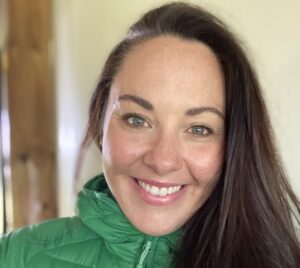
Alexandra Harden, one of the inaugural Saint Michael’s College Leahy Institute for the Environment fellows.
“Climate change touches absolutely everything,” Harden said. “When we think about problem-solving, it’s going to be a multidisciplinary solution. I think having students taking environmental science classes but also understanding the history of environmental movements and issues, understanding the economic implications, the social implications – having an understanding and a knowledge of all of that is critical to moving forward in a way that’s effective.”
Harden, a Ph.D. candidate at the University of Connecticut, has been looking at the intersections of climate change adaptation, climate risk, and labor and vulnerability through her research. The main questions of her research have been, “Are we actually adapting to climate change?” and “What does climate change adaptation labor even look like?” She has used recent floods and natural disasters in Vermont as case studies for her research.
“In Vermont, we rely heavily on volunteers for natural disasters and for climate-related events, so we see a lot of the labor being done in that area,” Harden said. “Right now, I’m more focused on the unpaid labor just because we see that more in Vermont. But that definitely has implications when we talk about how to become more resilient, and can we be more resilient when such a large portion of our labor field is people who are unpaid.”
At Saint Michael’s, Harden has been teaching classes about environmental policy and the environment and society. She considers herself a feminist geographer, and she sees her position at Saint Michael’s as an important part of this work because “part of being a feminist geographer is contributing and giving back to the communities in which you live.”
Having that local connection, Harden hopes, will help her students also more clearly understand – and communicate more effectively – the issues raised by and the urgency in addressing climate change.
“I think one of the ways that I’m bringing my experience into the classroom and with the fellowship is by being able to provide students with a local application of why this work matters,” Harden said. She added, “Being able to witness what you’re learning in a classroom can be really valuable, so I think that having this local knowledge is, I hope, making the classroom experience a little bit better, or a little bit more salient if they can connect with it.”
More information about Saint Michael’s College’s Patrick ’61 and Marcelle Leahy Institute for the Environment can be found here.>>
